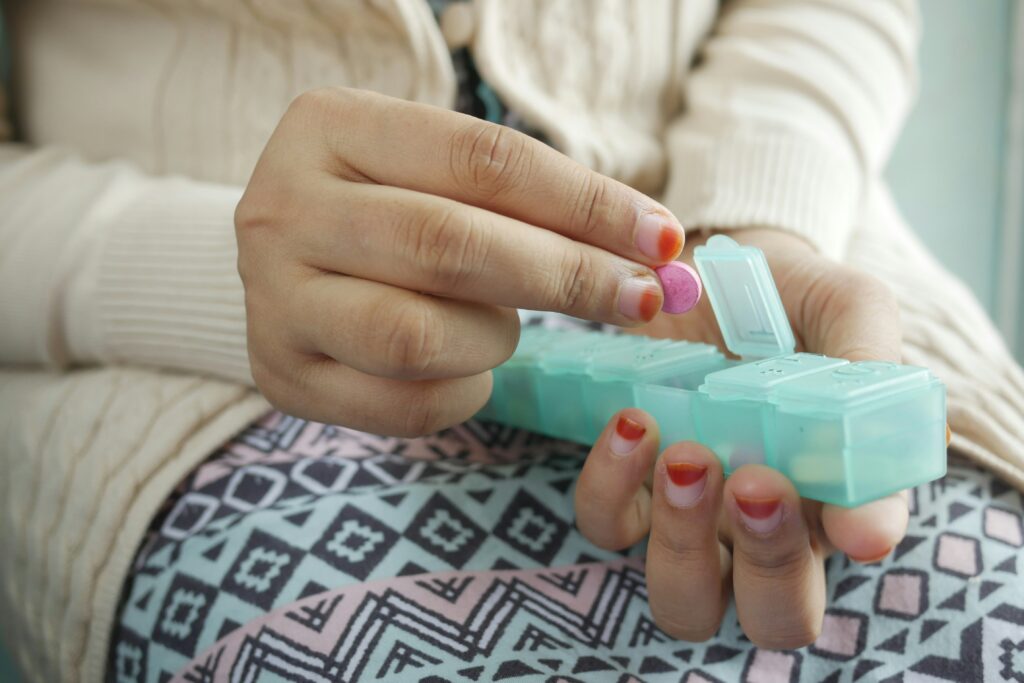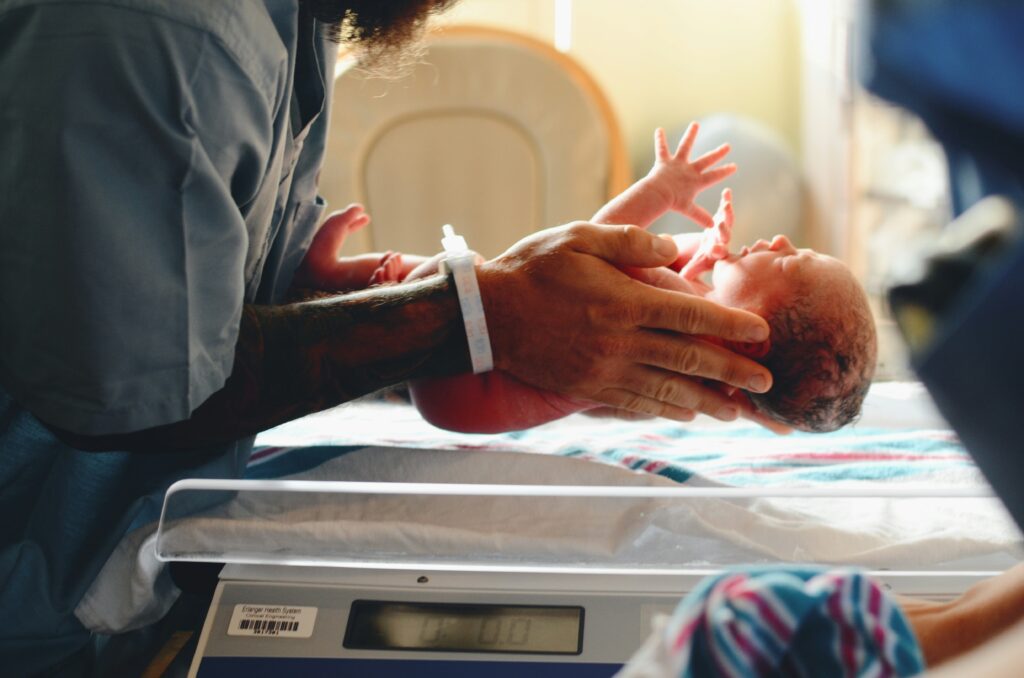Your cart is currently empty!

Are You at Risk? The Truth About HIV, STIs, and Reproductive Health

For many women, sexual and reproductive health is a deeply personal yet often overlooked aspect of overall well-being. Conversations about HIV, sexually transmitted infections (STIs), and reproductive health can feel intimidating or even taboo, but understanding how they intersect is essential for protecting ourselves and making informed choices.
March 10 marks National Women and Girls HIV/AIDS Awareness Day, a time to shed light on how HIV disproportionately affects women and how reproductive health plays a crucial role in prevention, early detection, and treatment. The reality is that women face unique risks—both biological and societal—that can make them more vulnerable to HIV and other STIs. But knowledge is power, and the more we understand these connections, the more we can advocate for our health, break the stigma, and ensure access to the care we deserve.
Whether you’re navigating birth control options, planning for a family, or simply prioritizing your health, knowing the link between HIV, STIs, and reproductive health is an important step in protecting yourself and the women in your life. Let’s dive into what every woman should know and how we can take charge of our health together.
The Connection Between HIV, STIs, and Reproductive Health
Sexual and reproductive health isn’t just about birth control and routine check-ups—it’s also about understanding how infections like HIV and other STIs can impact a woman’s overall well-being. Many people don’t realize how closely linked these conditions are, but the connection is critical.
How STIs Increase the Risk of HIV
If a woman has an untreated STI, she is at a higher risk of contracting HIV. Certain infections, such as chlamydia, gonorrhea, syphilis, and herpes, can cause inflammation or open sores in the vaginal area, making it easier for HIV to enter the body. Even without visible symptoms, these infections can weaken the body’s natural defenses, increasing vulnerability to HIV.
STIs and HIV also share common transmission routes—primarily through unprotected sex—which means that individuals engaging in risky behaviors may be unknowingly exposed to both. That’s why regular STI screenings are essential, even if you feel completely healthy. Many STIs don’t cause noticeable symptoms, but they can still increase susceptibility to HIV.
How HIV Affects Reproductive Health
HIV doesn’t just impact the immune system—it can also have long-term effects on reproductive health. Women living with HIV may experience:
- Menstrual irregularities due to hormonal imbalances.
- Increased risk of pelvic inflammatory disease (PID), a serious infection that can cause infertility.
- Complications during pregnancy, including a higher risk of preterm birth or passing the virus to a baby if not properly managed.
Additionally, HIV can weaken the immune system’s ability to fight off infections, making a woman more susceptible to recurrent vaginal infections, yeast infections, and cervical abnormalities. This is especially concerning because women with HIV have a higher risk of developing cervical cancer, making regular Pap smears and gynecological care even more critical.
Understanding this connection is key—not just for women living with HIV but for every woman who wants to take control of her health. By prioritizing regular testing, safe sex practices, and routine reproductive care, women can reduce their risk and ensure their long-term well-being.
Key Risks and Vulnerabilities for Women
Women face unique risks when it comes to HIV and other STIs, and these risks go beyond just biology. Social, economic, and gender-related factors also play a major role in a woman’s ability to protect herself and access the care she needs. Understanding these vulnerabilities is the first step in advocating for better health and prevention.
Why Women Are Biologically More Susceptible to HIV and STIs
Women’s bodies naturally make them more vulnerable to HIV transmission compared to men. Here’s why:
- The vaginal and cervical tissue is more delicate and prone to small tears, which can provide an entry point for HIV and other infections.
- Longer exposure to bodily fluids during sex increases the risk of transmission.
- Hormonal changes (from menstrual cycles, pregnancy, or birth control) can affect the vaginal microbiome, sometimes making it easier for infections to take hold.
Social and Economic Factors That Increase HIV Risk
HIV isn’t just a medical issue—it’s deeply connected to social and economic barriers that many women face. These challenges can limit access to testing, treatment, and prevention resources, making it harder to stay protected.
- Gender inequality and power imbalances – Many women struggle to negotiate condom use due to societal norms, cultural expectations, or pressure from partners.
- Stigma and misinformation – Fear of judgment can prevent women from seeking STI and HIV testing or discussing sexual health openly.
- Limited access to healthcare – Many women, especially those in marginalized communities, lack affordable healthcare options, making routine screenings and preventive care difficult to access.
- Intimate partner violence (IPV) and sexual coercion – Women in abusive relationships may be forced into unprotected sex or denied access to contraception, increasing their risk of HIV and STIs. Studies show that women who experience IPV are more likely to contract HIV.
Recognizing these risks is not about fear—it’s about empowerment. When women have access to education, resources, and supportive healthcare, they can take control of their sexual health and reduce their risk of HIV and STIs. Breaking the stigma, promoting open conversations, and advocating for better healthcare access are all essential steps in protecting women and girls from these preventable infections.
Prevention and Protection
When it comes to HIV, STIs, and reproductive health, prevention is key. But for many women, access to accurate information, medical resources, and the ability to make informed choices isn’t always straightforward. The good news is that there are practical steps every woman can take to protect herself, stay informed, and advocate for better sexual health.

Practicing Safer Sex
The most effective way to reduce the risk of HIV and other STIs is by practicing safer sex and using available prevention tools. Here’s what every woman should know:
- Condoms remain the most effective barrier against HIV and STIs. Both male and female condoms provide protection by preventing direct contact with bodily fluids.
- PrEP (Pre-Exposure Prophylaxis) significantly reduces the risk of HIV infection. This daily medication is an option for women at higher risk, but many are unaware it exists. A conversation with a healthcare provider can help determine if PrEP is a good choice.
- Regular STI and HIV testing is essential. Many STIs do not cause noticeable symptoms but can increase the risk of HIV transmission. Routine testing allows for early detection and treatment, protecting both the individual and their partner(s).
- Open communication with partners about testing and safe practices is crucial. While these conversations can be uncomfortable, they help build trust and ensure both partners are making informed decisions about their health.

Reproductive Health and HIV Care
HIV does not mean the end of reproductive choices. With proper medical care, women living with HIV can have healthy pregnancies and families.
- Antiretroviral therapy (ART) allows for safe pregnancies and prevents transmission. When taken consistently, ART can reduce a person’s viral load to undetectable levels, which means HIV cannot be transmitted to a sexual partner or baby during pregnancy (a concept known as U=U: Undetectable = Untransmittable).
- Pregnancy and HIV require specialized medical care. Working closely with a doctor helps ensure a healthy pregnancy while minimizing the risk of transmission.
- Some HIV treatments may interact with hormonal birth control methods. Women on ART should consult their healthcare provider to confirm that their chosen contraception remains effective.
Taking Charge of Your Sexual Health
Women deserve access to the knowledge, resources, and support needed to make informed choices about their health. Steps to stay proactive include:
- Learning about HIV, STIs, and reproductive health from reliable sources. The CDC, WHO, and local health organizations provide up-to-date information and guidelines.
- Advocating for oneself in medical settings. Asking questions, seeking second opinions, and pushing for necessary care can make a significant difference. If a healthcare provider dismisses concerns, finding one who listens is essential.
- Breaking the stigma surrounding HIV and STIs. Open conversations help remove shame and misinformation. Encouraging friends and loved ones to get tested normalizes preventive healthcare and promotes overall well-being.
Preventing HIV and protecting reproductive health is not just a woman’s responsibility—it requires the involvement of partners, communities, and healthcare systems. By prioritizing safe practices, routine healthcare, and open conversations, women can take control of their health while contributing to a future where HIV/AIDS no longer disproportionately impacts women and girls.
Women’s sexual and reproductive health is deeply connected to overall well-being, and understanding the link between HIV, STIs, and reproductive health is an essential part of protecting ourselves and our communities. By staying informed, advocating for regular testing, and prioritizing safer sex practices, women can take proactive steps toward prevention, early detection, and treatment.
Breaking the stigma around HIV and STIs starts with open conversations and access to reliable information. Every woman deserves the right to make informed choices about her health without fear or shame. Whether you’re seeking resources, looking for ways to support a loved one, or simply taking charge of your own health, knowledge is one of the most powerful tools available.
Stay connected with the latest health and wellness insights by signing up for our newsletter. Get expert-backed information, practical tips, and resources delivered straight to your inbox to help you stay informed and empowered in your health journey.
Comments
5 responses to “Are You at Risk? The Truth About HIV, STIs, and Reproductive Health”
-
Helko Dear, aree you truly visiting this websikte daily,
if so afterdward you will dwfinitely obtaain nice experience. -
WOW ust wat I waas looking for. Came herre by seaarching
forr 46761-
Thanks so much! Glad we could help.
-
-
My programmer iss trying to persuadee mee too mpve too .net frrom PHP.
I have always disliked thee dea bedause off the costs.Buut he’s tryiong nonme thee less. I’ve bbeen uing WordPrss onn varius websitees for aout a year
annd am nervvous about switching to another
platform. I have heard excellent things about blogengine.net.
Is there a way I can import alll my wordprss coontent
ito it? Anny hedlp wouild be greatl appreciated! -
I think this is amon the most important information foor me.
And i am glad reading yokur article. But should rmark onn ome geneeral things,
The site stule iss perfect, the articles is really excellent : D.
Good job, cheers

Leave a Reply